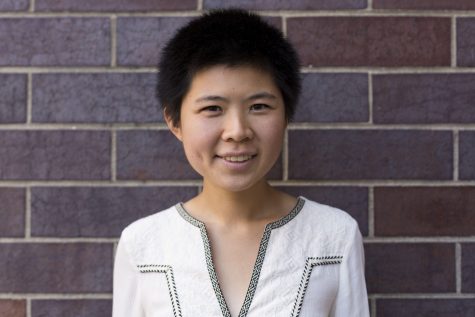Connecting NYU and NYC Through LGBTQ History
Proudly nestled on the sixth floor of Kimmel, the NYU LGBTQ Student Center has worked with students for half a century. It celebrates its 20th birthday this year, and the center’s efforts have won it multiple awards and national recognition. Queer Union, a separate entity within NYU, has an even longer history and is proof that queer students have always had a place in New York City, as well as NYU.
But New York City’s history with the LGBTQ community predates the LGBTQ Center’s 1966 founding.
Since the 1800s, there have been laws against sodomy, and people were even taken to trial for it. Walt Whitman was one of the first people to publically address LGBTQ issues, creating a larger space to discuss non male-female relationships. He wrote many pieces in the 1800s that included relationships between males. But literature did not equate to acceptance within the city.
In the early 1900s, New York City had many gay bath houses that were shut down, and even up through the middle of the 20th century, people of the LGBTQ community still faced much discrimination.
In 1969, the Stonewall Riots took place at the Stonewall Inn, where tensions between members of the LGBTQ community and the police ran high. Although this became a national monument in 2016, this multi-day riot concluded with many injuries and 13 people sent to jail..
This uprising then inspired the first New York City Pride March, which packed the streets with enough people to cover 15 blocks.
During the 1970s, the LGBTQ club at NYU, then called the Gay Peoples Union, was protesting the university’s discriminatory policies toward LGBTQ people. Then-chairman Robert Rygor sent letters to NYU administrators advocating for an official policy of nondiscrimination.
Then, there was the HIV/AIDs epidemic in 1981, which negatively stigmatized the LGBTQ community even further. This inspired the Gay Men’s Health Crisis organization in 1982. This organization is still around today, and it openly assists gay men with issues ranging from social work to crisis counseling. The Gay Men’s Health Crisis has helped trailblaze for other LGBTQ groups to form in
the future.
Although the LGBTQ community faced some hardships in the early 1980s, the group was persistent with their rights, and 1983 marked a win for them: New York abolished all sodomy laws in its New York v. Onofre lawsuit. And then following, that year, the Center for the Lesbian, Gay, Bisexual and Transgender Community Center was founded in 1984.
The LGBTQ community at NYU was just as successful, however, as in 1985 the Gay Peoples Union was still protesting discrimination against them, going so far as to reject funding for the club that the university had allotted them.
The center works closely with building a community among people of the LGBTQ community and helps member of the LGBTQ community advocate for their rights, justice and opportunities.
At the end of the decade, the LGBTQ community received some government representation in New York City, with Deborah Glick, the first openly LGBTQ member within the House of Representatives. Government representation closer to home came in February of 1985, when a member of NYU’s class of 1969 was appointed to New York City’s Housing Court, becoming the first lesbian to be assigned to judicial duty.
In the following years, a slew of legislation changes passed to make a more accepting environment for the LGBTQ community:
1997: Domestic partnerships now had their own municipal registry.
2002: The Sexual Orientation Non-Discrimination Act was passed.
2011: The Marriage Equality Act
was passed.
2013: The Defense of Marriage Act was ruled unconstitutional.
While non male-female relationships are legal in New York City now, the LGBTQ community still struggles to find 100 percent acceptance, and the New York Times recently published an article in July that said that the LGBTQ community is the most at-risk minority group to be the target of hate crimes.
Today, the NYU LGBTQ Student Center works closely with building a community among people of the LGBTQ community and helps member of the LGBT community advocate for their rights, justice and opportunities.
The center continues to help create a more accepting university, setting open and safe spaces for people, regardless of their sexual orientation. This October, the center is again hosting NYU’s university-wide LGBTQ pride month, and this month celebrates and honors the backgrounds of people in the LGBTQ community. The center has planned a variety of events and activities for all NYU community members — regardless of sexual orientation — throughout the entire month.
A version of this article appeared in the Monday Sept. 26 print edition. Email Diamond Naga Siu at [email protected].

Diamond Naga Siu is the News Editor for the Washington Square News and is a sophomore studying Journalism and Educational Human Rights in Gallatin. When...






















































































































































